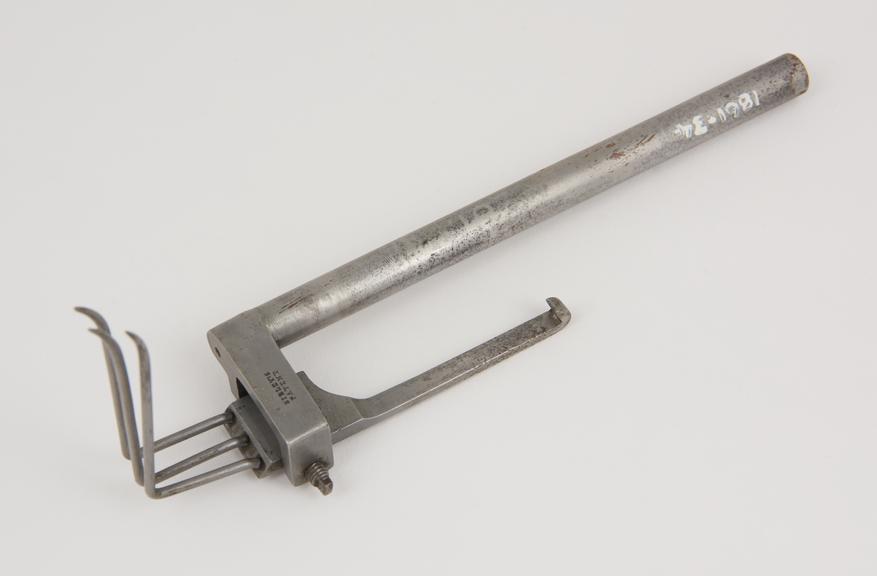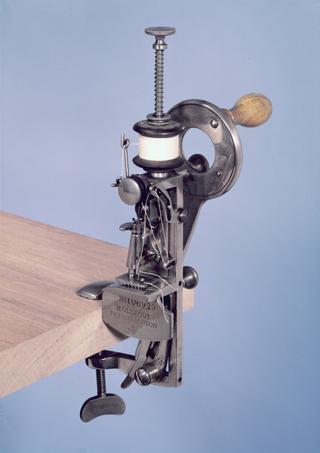
Weft fork from a power loom

Weft-fork for a power loom, patentee T. Sibley.
This is a detached example of a weft fork, which is part of an arrangement for stopping a loom if the weft should break. This device is used in all plain looms at the present time, but for fancy looms, where several shuttles are used and several picks made from the same side con- secutively, it does not give a sure means of stopping if any one of the shuttles breaks its weft. For such looms a weft fork is placed in the centre of the reed space. At one end of the fork there are prongs, and at the other end a hook; the fork is nearly balanced on a pin, the prong end being left lighter so that the hook tends to fall. The pin is fixed to a rod attached to a bracket on the stopping lever which, while the loom is running, is retained in a notch. A bell-crank lever, with its upper end notched so that it can catch the hooked end of the fork when both are at the same level, is oscillated by means of a cam on the tappet or picking- shaft. At one end of the shuttle race, in the reed frame, there is a grid between which the prongs can pass when the lay moves up. If the weft be unbroken, it lies across the grid and causes the fork to tilt up the hook, so that the oscillating notch does not catch. If the weft be broken, however, the prongs go through the grid and the hook is caught by the notch, so that the stopping lever is moved out of its notch and sprung to the end of its slot. The belt fork connected with the stopping lever throws the driving belt on to the loose pulley and at the same time applies a brake, so that the loom is stopped at once. The feature of Sibley's fork, patented in 1860, is the method of supporting it; with the object of reducing friction, and also taking up any slackness that may arise, the axis is carried between cone-centres.
Details
- Category:
- Textiles Machinery
- Object Number:
- 1861-34
- Materials:
- wrought iron
- type:
- weaving weft fork
- credit:
- Sibley, Thomas




